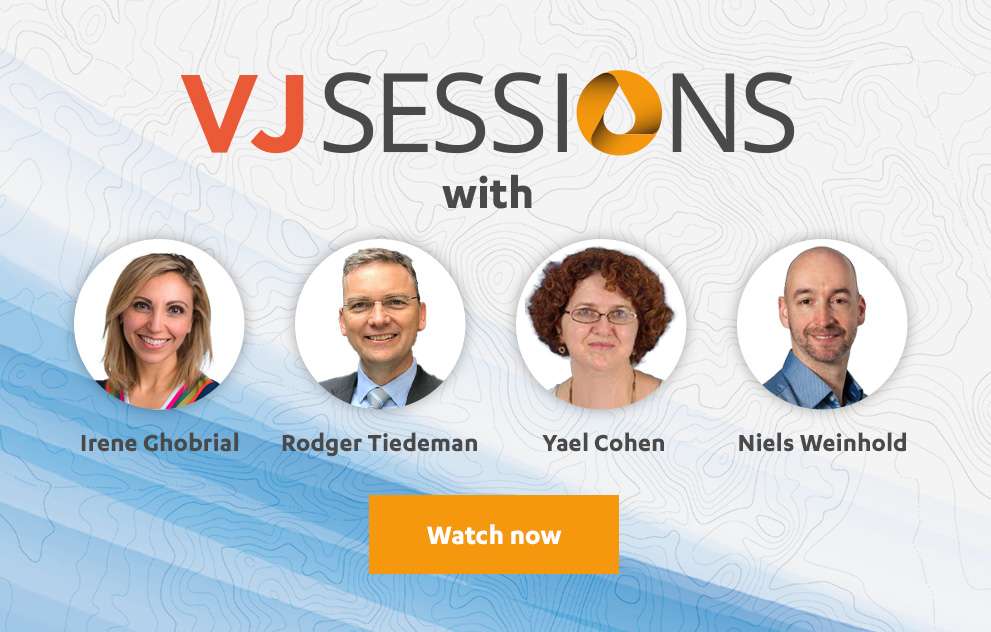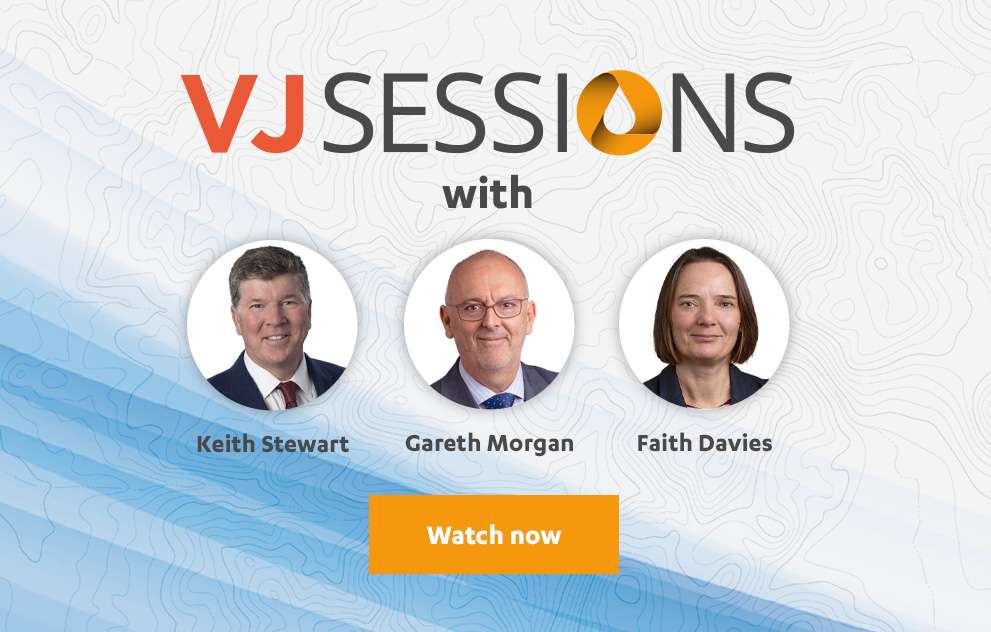Educational content on VJHemOnc is intended for healthcare professionals only. By visiting this website and accessing this information you confirm that you are a healthcare professional.
Welcome to The Myeloma Sessions brought to you by the Video Journal of Hematological Oncology (VJHemOnc)! In this exclusive roundtable session, Faith Davies, Charlotte Pawlyn and Hearn Jay Cho, discuss novel targets in 2022. Specifically discussed is IMiD resistance, immunogenic cell death, novel treatments for amyloidosis as well as approaching a cure.
Novel Targets in 2022
Faith Davies:
Thank you for joining us. We’re currently at Myeloma 2022, and it’s a real pleasure for me to introduce two of my colleagues. We have Charlotte Pawlyn, who is from the Institute of cancer research in the Royal Marsden hospital in London. And we have Hearn Cho, who is from the Mount Sinai hospital in New York, and is also the chief medical officer for the MMRF. And as you can see, two of us are dressed quite reasonably, and one of us has just completed a 5k run for the MMRF. So well done.
Hearn Jay Cho:
All for a good cause.
Faith Davies:
And thank you for joining us. So can you tell us just a little bit about the session we’ve just come from? Because it was really quite interesting,
Hearn Jay Cho:
Right, so we had a session that covered many of the important topics for clinical trials in multiple myeloma, including combination therapies, mechanisms of resistance to different drugs that are used in multiple myeloma, new treatments for amyloidosis and novel trial designs. So it covered a broad range of topics. It was molecular biology, immunology and clinical trial design. It was very broad based, but an important discussion.
Faith Davies:
Excellent. So Dr Bahlis was talking about IMiD resistance. Can you just expand a bit on that for us?
Charlotte Pawlyn:
Yeah, so I mean, we obviously have a few IMiDs that we’ve been using in the clinic for many years and then there are some novel IMiDs or CELMoDs that have been developed and are currently in different phases of clinical trials. So CC 220 and CC 9480. And so he really covered all of our understanding of mechanisms of resistance to this class of drug and whether or not these may be similar or different between the agents is potentially left not fully answered at the moment, but he has lots of answers and lots of interesting work understanding mechanisms of resistance so far.
Faith Davies:
And it was really good because his kind of biology talk was then closely followed by Sagar Lonial telling us about the latest data with 220.
Charlotte Pawlyn:
Yes. So we know that CC 220 is active in patients who have resistance to the earlier classes of IMiDs. So to potentially – resistance to lenalidomide and even pomalidomide in the trials, patients can then respond to CC 220 it’s a more potent cereblon binder and potentially also is able to degrade different neo-substrates as well, potentially explaining how it might be able to overcome some of those previous resistance patterns.
Faith Davies:
And then Hearn, you gave a talk, which was fantastic. And you really linked it well with some of the work that Ken Anderson was talking about, about immunogenic cell death. Do you want expand a little bit?
Hearn Jay Cho:
Yes. I think we are very fortunate to be in an era where immunologic strategies for multiple myeloma have borne fruit. And we have the approval of the anti-CD38 antibodies to anti-SLAMF7 monoclonal antibodies. We’ve had two CAR T-cells approved within the last year. And the likelihood is that bispecific T-cell engaging agents are going to be approved shortly. So we have a wealth of agents that have activity in myeloma. It seems now that pretty much every approved agent for myeloma has some form of immunologic activity. And so the real challenge now is how do we put these together to deliver curative therapy for multiple myeloma patients? And I would say that an intrinsic part of that question is “Can we give one thing to everybody or do we need to tailor our therapy for specific subpopulations of myeloma patients?” And so that draws upon the idea of precision medicine, understanding the genomic landscape of the tumor cells. It’s going to extend to understanding the immune microenvironment of different patient populations as well. So I think we need to understand how best to leverage our current repertoire of agents in addition to adding new agents to it. So I think that Ken’s talk where he was describing a really innovative view of how immunogenic cell death occurs in myeloma cells and the pathways that are involved in that, and then Nizar’s talk about resistance to IMiDs that are intrinsic to the myeloma cells and then potentially how that might be seen in the context of the immune microenvironment and so forth. And to a certain extent, Sagar’s clinical data touched upon those questions as well. So I see that we are faced with a challenge of, on the one hand, an embarrassment of riches in terms of available agents, but we still don’t have broadly applicable curative therapy. So we need to use what we understand about biology to put together combinations and sequences. And I did purposely emphasize sequences in my talk because the immune response does not happen all at once. It happens in an orderly progression of events. So understanding that biology and using our agents to mimic that process to maximally mobilize immune response against myeloma, I think is where we’re headed.
Faith Davies:
That’s great. I gave a talk earlier today about high-risk and one of the kind of areas I left a little bit open was about immunology and high-risk. And I thought it was really interesting that Ken was saying that the data that his amazing postdoc has produced is really suggesting that patients who have high-risk myeloma may not be able to undergo this immunogenic cell death. So I think that’s another interesting area. The other thing that we kind of talked about was amyloid, it’s always a kind of forgotten sister or brother in the corner there. And I think Dr Lentzsch had some really novel ways about thinking about treating that as well.
Charlotte Pawlyn:
Yeah. So I think she presented the two kind of different approaches to trying to treat amyloid, one, thinking about combining new kind of anti-myeloma, what we might think of as anti-myeloma agents. So the daratumumab and combined with VCd study, but then also thinking about trying to target amyloid itself with specific antibodies that are currently going through clinical trials rather than just the underlying plasma cell, if you like.
Faith Davies:
And it was quite interesting because we keep hearing about CAR T-cells in myeloma, but there seemed to be some kind of equivalence that we might be able to use in amyloid as well. I haven’t seen that dated before.
Hearn Jay Cho:
Yes, using chimeric antigen receptors in macrophages to direct macrophages, to phagocytose amyloid deposits in the extravascular spaces. That’s a very interesting idea. I found that there’s a certain poetic justice that we are using so many different antibody based approaches to treat a disease that is characterized by overproduction of antibodies.
Charlotte Pawlyn:
[Crosstalk] Yes.
Hearn Jay Cho:
But yeah it’s really… Every CAR is derived in part from a SCFE, all the BiTEs have SCFs. So we are using a multitude of engineered monoclonal antibody approaches to treat monoclonal gammopathy.
Charlotte Pawlyn:
Yeah, because I think her work wasn’t just about CAR-Ts, but also bispecific antibodies targeting the amyloid protein –
Hearn Jay Cho:
Absolutely.
Charlotte Pawlyn:
– specifically. So using both of those different mechanisms too.
Hearn Jay Cho:
It does show that there’s… we are looking ahead beyond the first generation of CAR-T cells, the first generation of bispecific redirecting agents. There’s actually a number of bispecific agents that are in development that instead of activating T-cells are going after antigen presenting cells. So in order to bolster that immunogenic cell death, antigen presentation step of the immune response. So I’m very interested to see where those next generation agents are going to go.
Faith Davies:
And then I think the final talk in that session, hopefully I haven’t missed one was from Dr San Miguel about cure. I mean, and that was really nice kind of putting everything together there.
Charlotte Pawlyn:
Yeah, it was a great overview of how to approach cure, where when we should start treating patients, whether we should try and treat earlier to try and achieve that cure. But I think what was also really interesting about putting his talk and then your talk at the end together was that concept, which is perhaps a bit provocative, about whether or not we already have all the agents that we need to achieve cure, and it’s just about trying to design the best approach to use them. So thinking that we have all of those things already and how should we go about organizing that treatment approach, personalizing it to different patients in different ways. It’s kind of exciting. We think a lot about new drugs and new agents, but maybe we should be focused more on how we use the things that we have already.
Faith Davies:
Thanks, and closing thoughts for us?
Hearn Jay Cho:
Well, we’re thinking a lot about cure these days. I think it’s reasonable for people to have optimism for the patients who are being diagnosed now they may live to see broadly applicable curative therapy, but everybody who practices in multiple myeloma has a handful of patients in their practice who are extraordinarily long survivors, right? So we have a lot of agents that can by whatever mechanism, which we clearly don’t understand well, can confer cure. So that’s our challenge to put it together and develop curative therapy.
Faith Davies:
And Charlotte, closing thoughts on the biology we heard?
Charlotte Pawlyn:
Yeah. So lots of exciting biology and trying to think about how we can target specific resistant mechanisms to try and use those agents best for patients is kind of exciting for me.
Faith Davies:
Excellent, lovely. Well, thank you both for joining us and thank you for listening and I’m sure we’ll be coming back to you soon from Myeloma 2022 in Scottsdale.








